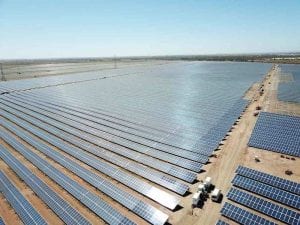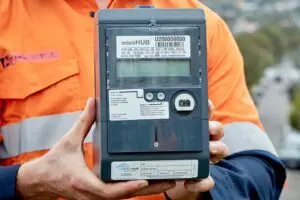Australia’s National Electricity Market is at risk of being “Balkanised” because of differences among state and federal governments over the shape of new market rules that are supposed to be designed to facilitate the accelerating shift to a zero emissions grid.
State and federal energy ministers met on Friday under the banner of “national cabinet” to discuss the proposals put forward by the Energy Security Board for the post 2025 market design.
But there are fundamental differences over the nature of these proposals, even though – to the astonishment of most – they are still only vaguely defined and may not take shape until the middle of next year.
The two big centres of concern are over the concept of a “capacity market” and the proposal of a “physical retailer reliability obligation” that many fear would simply funnel billions of dollars to ageing and unreliable coal generators. Few details have been released, but it is already being dubbed “coal-keeper.”
The other major flashpoint is about so-called “congestion payments” for transmission infrastructure, but the renewables industry says the proposal is too similar to the discredited “Cogati” model put forward in 2019 and is unworkable.
The frustration is immense. The Australian Energy Market Operator has already published a 20-year blueprint on how to decarbonise the main grid by around 2040, and is working on a new version that could accelerate this to the mid-2030s, in accordance with the latest science that calls for rapid emissions cuts in the next 10 years.
But the biggest impediment to this roadmap is the lack of transmission investment, and market rules which have failed to keep up with new technologies, and are no longer fit for purpose.
Reforming these major roadblocks was, or should have been, the primary and urgent responsibility of the ESB. In the meantime, investment in new projects has virtually ground to a halt because of the uncertainty.
The campaigning and the lobbying is intense. Last week, federal energy minister Angus Taylor hosted an online forum including the CEOs of most major generation companies that was organised by the Energy Council of Australia, which largely represents legacy generators and is largely supportive of the new ESB proposals.
The “coal-keeper” idea has been lambasted by the most in the industry, including some coal generator owners and even the government owned Snowy Hydro. Most fear that it is focused on protecting legacy coal and gas plants, and will not do what it ought to do: Encourage investment in new flexible technologies.
A report released late last week said that if the proposed mechanism was modelled on the Western Australia capacity market, it could cost up to $7 billion a year, or more than $400 per household.
The Clean Energy Council also wrote a letter last week urging the states to look beyond the capacity markets and PRRO, and the “congestion management model”, and said it also wanted to see more clarity about what is proposed for distributed energy resources, which includes rooftop solar, batteries and electric vehicles.
It has also emerged that the CEOs of four companies with major investments in coal generation – Delta, EnergyAustralia, Alinta and Origin – also wrote to ministers urging that an “appropriate body” draft new rules on the PRRO or alternatives by June 30 next year.
The inclusion of Origin in the letter of support for “coal-keeper” was surprising, given its luke-warm response to the proposal in its formal submission, and given that the owner of the country’s biggest coal generator (the 2,800MW Eraring facility in NSW) had only this week declared that “baseload is over” because of the increased flexibility required by the shift to renewables.
Taylor released a statement late Friday that said little more about the meeting other than that ministers agreed on the need for more design work on the mechanisms to support “dispatchability”, and a “final package” of reforms would be presented to ministers in late September, although this is not expected to include the fine details.
The Murdoch media’s The Australian newspaper declared on Saturday that “Energy ministers back coal plan”, but that appears to be more wishful thinking than the reality.
It has emerged that some states have already made it clear they don’t like the direction the talks are heading. NSW is not supportive of “coal-keeper” because it has its own plans in place, under its renewable infrastructure roadmap, and can’t see the point in doubling up.
Victoria is also hesitant – even though it has already locked in its own secretive “capacity” deal with EnergyAustralia’s Yallourn generator – and wants to ensure that any mechanism is designed to ensure new capacity is built rather than building a financial moat around ageing and increasingly unreliable generators.
Queensland has also expressed concern about the “congestion management” system, and is looking to its own models for renewable energy zones (as are other states).
Unless some details, and some agreement, can be found in subsequent meetings, energy analysts are concerned that the result of the ESB’s work on market reform will be a fracturing of the National Electricity Market, rather than a strengthening.
States have already had to go their own way with renewable energy and emissions targets, and underwriting agreements in recent years because of the lack of interest from the federal Coalition government. Any further division and “opt in” or “opt out” decisions and arrangements on market reform could make the NEM unworkable.
The market is disappointed that the ESB has not produced more detailed proposals despite working on these reforms over several years. Some blame the meddling of Taylor, while others point to the so-called “regulatory capture” where discussion is dominated and directed by executives seconded from incumbent industry.
There is now great debate over who should take the reins of the market re-design, and if it should continue to be the ESB, or another entity such as the Australian Energy Market Commission.
The CEC said in its letter it was disappointed that more progress has not been made by the ESB in much needed reform of transmission investment, and accused it of failing to address the cause of the issue – and addressing the delays in transmission investment – over the last two years.
“CEC believes that the AEMC is now much better placed to play a more strategic and proactive role in long term and progressive market review and design,” it writes. (Given the AEMC’s historically slow response to technology change that may appear to be a surprise, but the organisation now has new leadership).
“CEC would support enhanced funding and resourcing of the existing market bodies and an approach to ensure continued collaboration and coordination, particularly as it relates to DER where there is a very large reform agenda that requires coordination and momentum.”
And it added: “This approach should also address the increasing lack of transparency and consultation inherent in the recently established National Cabinet Energy Sub-Committee model.”
There is huge controversy over the secrecy and non-disclosure of the state energy ministers meeting since the old COAG energy council was usurped by the “national cabinet” model deployed at state leaders model to deal with the Covid-19 response.
A ruling has been made that contests that “cabinet in confidence” approach, but this is being challenged by the federal government. In the meantime, little is being disclosed.










